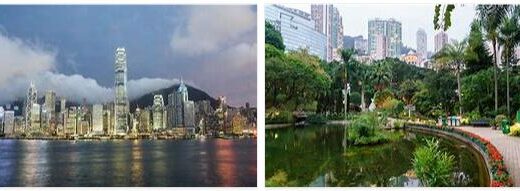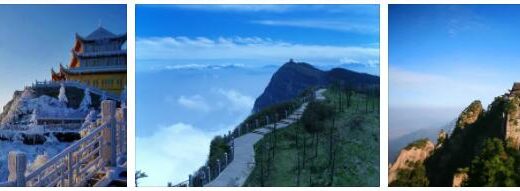Imperial Palaces in Beijing and Shenyang (World Heritage)
The cultural heritage includes the Imperial City in Beijing, the so-called Forbidden City. It was built in the 14th century during the Ming Dynasty and has almost 10,000 rooms. 24 emperors resided here. The Shenyang Palace is the only remaining royal palace complex in China outside the Forbidden City. It was built between 1625 and 1636 during the Qing Dynasty and was the imperial residence until 1644.
Imperial Palaces in Beijing and Shenyang: Facts
| Official title: | Imperial Palaces of the Ming and Qing Dynasties in Beijing and Shenyang |
| Cultural monument: | the “Forbidden City” was the imperial residence of 24 monarchs for five centuries; Center of power the “Hall of Supreme Harmony” (Taihe Dian); with the “Hall of Perfect Harmony” (Zhonghe Dian) and the “Hall for Preserving Harmony” (Baohe Dian) heart of the “Forbidden City”; other structures, among others the midday gate (Wu Men) as the main entrance to the “Forbidden City”, the “Hall of Military Valor” (Wuying Dian), once the reception hall for the ladies of high officials, the “Palace of Heavenly Purity” and the “Hall of Touching Heaven and earth ”, residence of the Ming empresses |
| Continent: | Asia |
| Country: | China |
| Location: | Peking (Beijing) |
| Appointment: | 1987 |
| Meaning: | a valuable classical testimony from the time of the Ming and Qing dynasties |
Imperial Palaces in Beijing and Shenyang: History
| 1368-1644 | Ming Dynasty |
| 1407-20 | Expansion of the Imperial Palace |
| 1420 | Construction of the lunch gate; Entry of the Yongle Emperor into the Forbidden City |
| 1644-1911 | Beijing as the capital of China during the Qing Dynasty |
| 1723-26 | “Palace of Heart Education” as the preferred residence of the Qing Emperor |
| 1731 | Construction of the “Palace of Celibacy” (Zhai Gong) |
| 1798 | Reconstruction of the “Palace of Heavenly Purity” to its present form |
| 1860 | Occupation and sacking of Beijing by French and English armies |
| 1900 | In the course of the Boxer Rebellion, the freedom fighters take control of Beijing, and when fighting with allied invading troops, Beijing goes up in flames |
| 1924 | After the abdication of the last emperor Pu Yi, the Forbidden City is opened to the population |
| June 28, 1928 | Beijing is renamed Beiping and becomes a special city |
| 1937 | Battle for the defense of Beijing with the Japanese invaders |
| 1949 | Beijing becomes the capital of the People’s Republic of China |
| 2008 | extensive restoration work up to the Olympic Games |
The middle of the empire
According to thesciencetutor, Chinese emperors did not always rule “Zhonghua”, the “Middle Kingdom”. In the 13th century, the Mongols ruled almost all of what is now China, establishing an administration dominated primarily by Persians, Syrians and Turks, and establishing a capital known as Khanbaliq after the leader, the Great Khan. After the rapidly growing Mongol Empire collapsed under the pressure of Chinese uprisings, a Chinese dynasty established itself again under the name »Ming« – »shining, bright, clear« – which soon demolished the palace of the Khan and in its place according to traditions of the early Han and Tang dynasties built the epitome of a Chinese palace complex.
It was not high, rising castles that indicated the power of the Chinese rulers, but rather a complex that was as square as possible and symbolized the earth – in the Chinese imagination a square disk. The outstanding location around which the rest of the city had to group itself made the claims clear, with the center as the fifth and most important point of reference. Even if Beijing was not the geographical center of the empire, the capital was still considered the symbolic center, in the middle of which was the palace, the core of the empire from which all power emanated.
All important buildings are located on a central axis, oriented exactly from north to south, which at that time ran through city gates and a boulevard through the entire city. Other buildings are arranged in pairs on both sides of the axis or are aligned with parallel secondary axes. The large halls that were used for ceremonies and receptions, i.e. the state area of the palace, are located in the south of the complex, while the residential palaces are in the north. This arrangement of the buildings is related to the Chinese concept of Feng Shui, which regulates the embedding of people and their dwellings between “wind and water”. Accordingly, buildings need protection to the north and open to the south to the light and warmth of the sun. In the “middle of the empire” these conditions are fulfilled, because a mountain range protects the city in the north and west from the winds from the Gobi desert, while a plain opens in the south and east. To protect the palace, an artificial hill was built behind its north gate with the excavation of the moat – popularly known as the “coal hill” because the fuel for the palace was stored there.
The individual buildings are not necessarily impressive because of their height, but rather because of their massive width. All stand on platforms made of quarry stone, which in the reception halls reach an impressive eight meters and protect the wooden components from moisture from below. From these pedestals rise the massive wooden pillars made of the particularly hard nanmu, which was brought over canals from southern China for the construction of the palace. These pillars support the extremely heavy roofs covered with glazed clay tiles. The color of the bricks was “given” to a building by the emperor: in the palace it is yellow, the symbolic color for the emperor himself.
The representative halls are covered by two-tier, high and large-area roofs, which nevertheless appear light and lively because the corners can be pulled up through a special wooden substructure. These are “populated” by all sorts of mythical creatures made of glazed clay, which should keep dangers from the palace and its residents, not just from Mongols.



